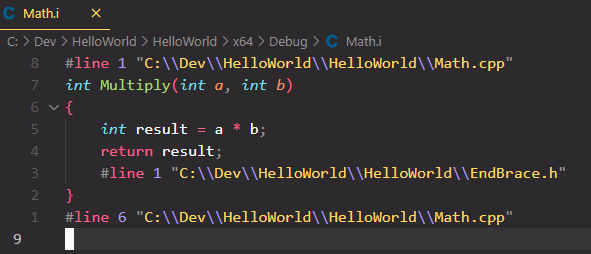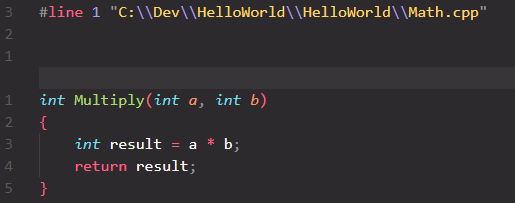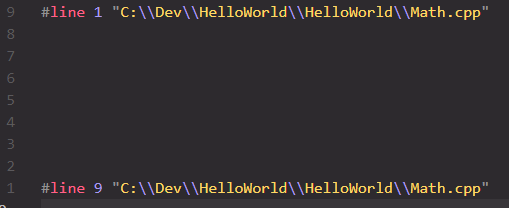06 How the C++ Compiler Works
1. Abstract Syntax Tree
The compiler's job is to transform code into constant data and instructions. After constructing the abstract syntax tree, it begins generating code.
In C++, there is no concept of a "file"; files are merely a way to provide source code to the compiler.
.cpp tells the compiler to compile using C++ -> the compiler treats it as a translation unit -> resulting in a .obj file.
Common preprocessor statements are pragma statements.
Common Preprocessor Statements
2.1 #include
#include simply copies the contents of the desired file into the current file. For example, if you create an EndBrace.h file with the following content:
Then, my Multiply function can still compile correctly even if written like this:
To inspect the preprocessed file, you can generate a .i file by performing the following operation:

The contents of the Math.i file are as follows:

2.2 #define
This searches for the word INTEGER and replaces it with what follows.

2.3 #if
Allows us to include or exclude code based on specific conditions.

You can convert .obj files into a readable .asm format. To read binary, I used the VSCode plugin Hex Editor.
3. Compiler Optimizations
3.1 Simple Case
3.2 Constant Folding

3.3 Function Signatures and Calls
A "call" refers to invoking a function. Through symbol decoration, the function is given a unique signature, allowing the linker to locate the function based on its signature.

Modifying the compiler can automatically optimize assembly instructions.

